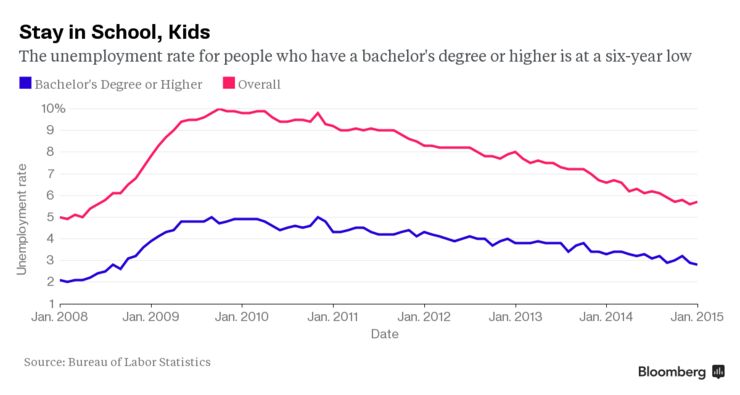Last month, the unemployment rate of workers who hold a bachelor's degree or higher sank to 2.8 percent, its lowest level since September 2008. That compares with a jobless rate of 5.7 percent for the overall population.
Source: BloombergBusiness
No Near Term Shortage Of College Educated Workers
Despite the sensational headline of the Bloomberg article mentioned above, there is not a present or near term need to worry about running out of bachelor degree holders for the workforce. As the chart from St. Louis Fed FRED data series shows below, the participation rate among bachelor degree holders in the labor force has been declining. There is an untapped reserve of college educated workers sitting on the sidelines.
From St. Louis Fed, Economic Data, FRED, "Civilian Labor Force Participation Rate - Bachelor's Degree and Higher, 25 years and over:"
 |
| Source: FRED, St. Louis Fed |
Also, total job turnover, including the college educated, is about 3 and 1/3 percent of the workforce each month and the great majority of job hires are people who left other jobs, voluntarily and involuntarily. {See monthly BLS JOLTS Survey.) This job turnover results in increased productivity since workers move to positions where they are more needed or where they can get higher pay. Both are generally indicators of movement to a higher productivity position.
Businesses will also adapt job skill requirements to expectations of workforce costs and availability through increased investment in capital, automation, job training and simplifying job design to the skill levels available in the workforce.

ReplyDeleteHi admin
I read your blog, its really awesome, I love it.
I have additionally this related website.
There is certainly a common erroneous belief in the minds of students over the basic difference between a bachelor 's and a master' s degree.
A bachelor's degree requires 4 years to finalize, while a bachelor master degree requires two more years to be achieved.
bachelor's degree
Regards,
Fahiam mahomed